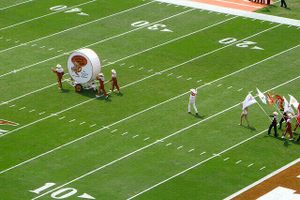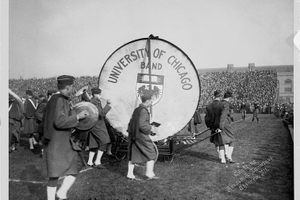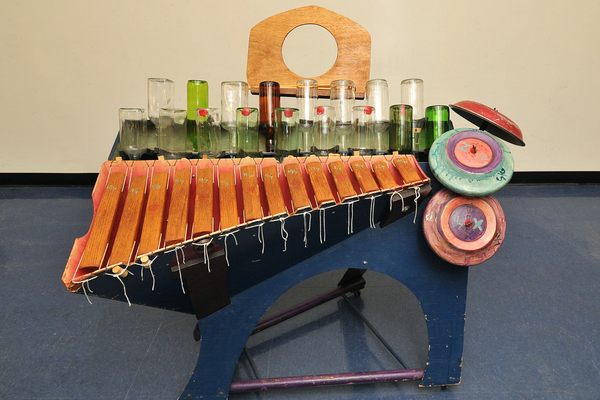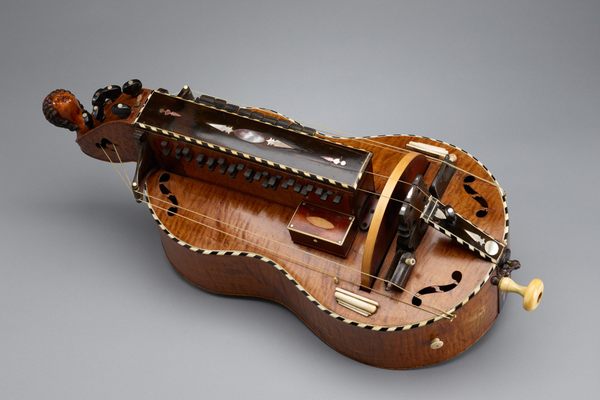About
The Big Bertha drum was named for the Big Bertha Howitzer, a German cannon used in World War I, and its low rumble punctuates each University of Texas football game. Known as the “Sweetheart of the Longhorn Band,” it was originally commissioned by the University of Chicago in 1922.
C. G. Conn Ltd. built the drum from the largest animal hides they could find in the Chicago stockyards, and the completed drum was so huge that part of a wall had to be removed just to get it out of the factory. Used at the Chicago football games, Big Bertha also made a trip to New York at one point in 1938, just to play one note in a performance of Verdi’s Requiem directed by Toscanini in Carnegie Hall.
When Chicago’s football program was canceled, the giant bass drum was abandoned beneath the stadium. During the 1940s, scientist Enrico Fermi worked on the Manhattan Project in the stadium, creating the first nuclear chain reaction. The atomic bomb research left the big bass drum radioactive.
In 1955, Moton Crocket, former UT Longhorn Band director, purchased Big Bertha for just one dollar. Once back in Texas, it was decontaminated and restored before becoming part of the Longhorn band. Crocket also established an endowment to care for the drum.
Big Bertha measures roughly 44 inches wide and 10 feet tall and weighs more than 500 pounds. The exact measurements are kept under wraps, as both Texas and Purdue claim to have the biggest bass drum in the world, and the debate over which university has the biggest bass drum in the world has yet to be settled.
The Atlas Obscura Podcast is a short, daily celebration of all the world's strange and wondrous places. Check out this episode about Big Bertha.
Related Tags
Published
September 3, 2010
Sources
- The University of Texas at Austin: Alumni & Friends: http://www.utexas.edu/friends/fun.php?which=3
- The University of Texas at Austin: Longhorn Band: Big Bertha: http://mbe187.music.utexas.edu/Longhornband/history/Bertha.aspx
- The Chicago Tribune: "Drumbeat of history" (December 2002): http://articles.chicagotribune.com/2002-12-31/features/0212310031_1_drum-longhorn-stadiums/
- Austin American-Statesman Newspaper : " Moton Crockett, Jr Business Leader and UT Band Director Dies at 96" October 3, 2019 - article written by Shonda Novak




























